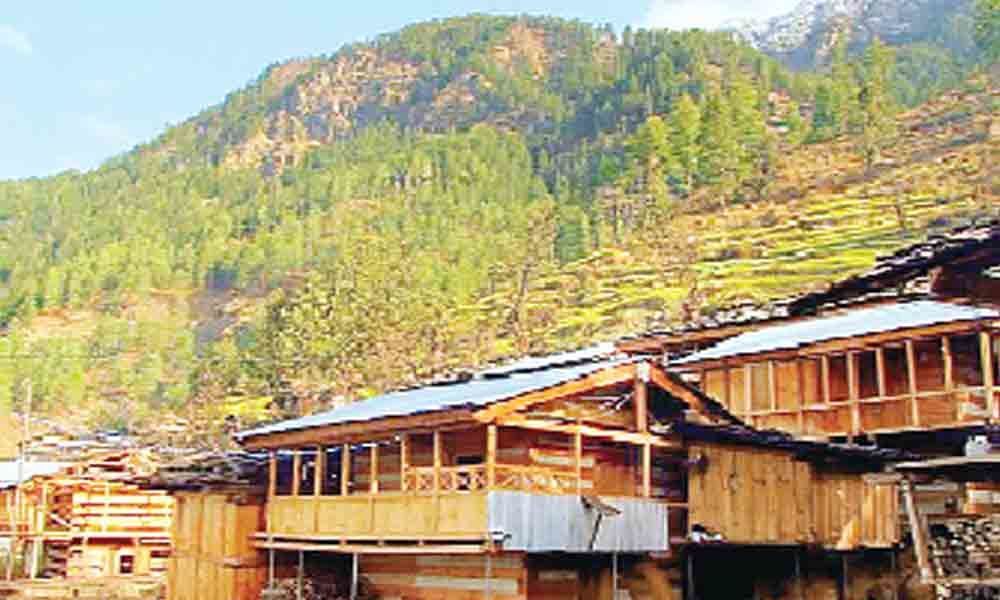Marvel in the high mountains
Kalap, a small village in Uttarakhand with a population of about 500 people, is home to traditional Garhwali architecture and its surroundings offer stunning natural beauty…
It was around two years ago that I first stumbled upon Kalap on the internet. The moment I read the homepage stating, 'Untouched Garhwal', I knew that I HAD to visit this place. That wish of mine recently came true when I got an opportunity to be part of a trekking group to Kalap.
Visiting Kalap is like stepping back in time – traditional wooden houses with slate topped roofs, cattle and sheep in every household, and smoke gently curling up above the roof tops.
For the uninitiated, Kalap is a small village in Uttarakhand with a population of about 500 people and can be reached only after five hours of trekking in winters and about eight hours in summers. But once we reached, we realised that we are in real paradise- the village is home to traditional Garhwali architecture and its surroundings offer stunning natural beauty, including views of the snow-capped Bandarpunch range. Due to not being at a road head and far from the major touristy areas in Uttarakhand, Kalap has remained untouched by mainstream tourism.
It is also a land of stories and legends. The entire Tons river valley is considered to be the birthplace of the Mahabharata, the Sanskrit mythological epic. The protagonists of the epic, the Pandavas and Kauravas, are said to have descended from this very valley, and the people living here still claim to trace their lineage to one of the two clans.
Local lore also says two old men from Rajasthan came up here and founded a settlement about 300 years ago. Eighty per cent of the residents of Kalap are of Rajput stock, and speak their own dialect of Garhwali. Perhaps they were fleeing the Mughals or perhaps they were just intrepid shepherds seeking greener pastures. Whatever be the origins, I decide not to dig deep into a hazy past but to strap on my backpack and plunge into the enamouring present.
It's 7am in the village of Kalap. I've escaped from urban cacophony into a spectacle of soaring peaks, silent forests and intend to make the most of it. The fog is lifting from the mountains, revealing roofs draped in pumpkin vines and farmers bent over their baskets in faraway fields.
Gattu is my homestay host in the village, and it doesn't take long for me to slip into easy familiarity with him. His gang of frisky children cling to me as I weave in and out through their village, past walnut trees and flowering bushes towards his ancestral home, made from handsome logs of deodar, like every other house here.
There's livestock spilling into each yard. A merry mix of cows, horses, sheep and goats, but a conspicuous absence of chickens. This is because the collective memory of a Rajput past has kept the village vegetarian (except on rare occasions when groups of men succumb to the old primitive instinct and go hunting in the woods). The sheep and goats are raised for sale in the town markets.
But it's not easy to keep animals plump and pacified here. In fact, it's one of the most gruelling exercises one can imagine. The Himalayas have many natural riches, but grazing grass is in short supply. And so, for six months a year from May to November, groups of shepherds from Kalap and nearby villages travel from one far-flung bugyal (grassland) to another with their combined flocks and rations, from the Tons River valley to the sacred Baraad Sar Lake at 14,500ft, traipsing through tangled forests and sleeping on silky meadows.
I don't realise what a feat this is till we start following in their footsteps. Everyone here trots up and down the mountain slopes without breaking a sweat. I put my best feet forward and finally manage to keep up with our merry band of men. It helps that our meals here are seriously carb-heavy: chickpeas, kidney beans reign over our diets and are burned off by our bodies for five to six hours every day.
Our hosts introduce us to local flavours too, like home-grown pumpkins cooked along with their leaves and energy-packed rotis made of ragi and chaulai. It's the season of amaranth, or chaulai, the vibrant pink food crop that leaves travellers to this pinnacle of the earth with heavy bellies and lighter hearts. In winter I learn these fields transform: the rosy amaranth disappears, and snow settles on the green wheat crop.
Visiting Kalap is like living an epic real-time - where neighbours gather and banter around cooking fires inside traditional wooden homes, gritty shepherds wander the high peaks with thousand-strong flocks for half the year; where the streams are cleaner and prettier and "love marriages" a cultural norm. It is a place to cleanse your soul, stoke your spirits and breathe free once again.









